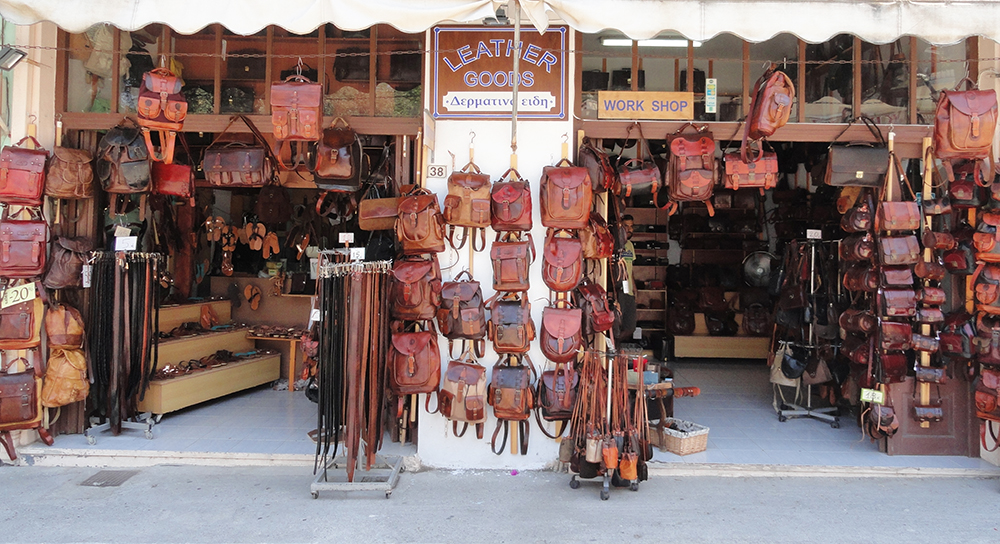Crete, the largest of the Greek islands, is renowned for its rich cultural heritage, vibrant traditions, and exceptional artisanal products. These handcrafted items, deeply rooted in the island’s history and culture, range from intricate textiles and pottery to exquisite olive oil and honey. Cretan artisans continue to preserve and innovate their crafts, ensuring that the island’s artisanal products remain relevant and cherished both locally and internationally. Exploring these products provides a window into the island’s soul, reflecting the creativity, skill, and dedication of its people.
Traditional Textiles
Textiles have long been an integral part of Cretan culture. The island’s women traditionally engaged in weaving, creating beautiful fabrics for clothing, household items, and ceremonial purposes. Using looms passed down through generations, they produce intricate patterns and designs that reflect the island’s history and folklore.
One of the most renowned textile products is the “Cretan woven rug”, or kilim. These rugs are known for their vibrant colors, geometric patterns, and durability. They are often made from wool and dyed with natural colors derived from plants and minerals found on the island. Cretan embroidery is another notable textile craft, featuring detailed motifs inspired by nature, mythology, and everyday life. These embroidered items, such as tablecloths, pillowcases, and traditional clothing, are prized for their beauty and craftsmanship.
Pottery and Ceramics
The art of pottery in Crete dates back to the Minoan civilization, with archaeological findings revealing the advanced techniques and artistic flair of ancient Cretan potters. Today, Cretan pottery continues to thrive, blending traditional methods with contemporary designs.
“Pithoi”, large storage jars, are among the most iconic Cretan pottery items. Historically used for storing olive oil, wine, and grains, these jars are now often used as decorative pieces. Smaller pottery items, such as bowls, plates, and vases, feature characteristic motifs like spirals, marine life, and floral designs, all painted with natural pigments. These ceramics are not only functional but also serve as beautiful reminders of Crete’s artistic heritage.
Olive Oil and Olives
Olive oil is synonymous with Crete, where olive trees have been cultivated for over 3,500 years. Cretan olive oil is celebrated for its exceptional quality, flavor, and health benefits. The island’s unique climate and soil conditions contribute to the production of some of the finest extra virgin olive oils in the world.
Cretan olive oil is typically produced using traditional methods, ensuring that the oil retains its natural nutrients and rich taste. The olives are handpicked and cold-pressed, a process that preserves their flavor and nutritional properties. This olive oil is a staple in Cretan cuisine and is also used in various beauty and health products. Olive-related products, such as tapenades, marinated olives, and olive wood utensils, are also popular and highly sought after.
Honey and Beekeeping
Cretan honey is another artisanal product with a long-standing tradition on the island. The diverse flora of Crete, including thyme, sage, and wildflowers, provides a rich and varied diet for the bees, resulting in honey with distinctive flavors and high nutritional value.
Thyme honey is particularly famous and is known for its aromatic, slightly spicy taste and numerous health benefits. Beekeeping in Crete often follows sustainable practices, respecting the bees and their environment. Cretan honey is not only a delicious natural sweetener but also an important ingredient in traditional recipes and home remedies.
Leather Goods
The art of leatherworking in Crete dates back to ancient times, with Cretan leather goods known for their quality and durability. Traditional leather sandals, bags, belts, and wallets are handmade using high-quality leather and time-honored techniques.
Cretan leather sandals, in particular, have gained international acclaim. These sandals are designed for comfort and longevity, featuring simple yet elegant designs that reflect the island’s aesthetic sensibilities. The craftsmanship involved in creating these leather products ensures that each item is unique and built to last.
Raki and Wine
Cretan raki (or tsikoudia) and wine are integral to the island’s culture and hospitality. Raki, a strong distilled spirit made from grape pomace, is traditionally enjoyed as a welcoming drink. The process of making raki is often a communal activity, bringing together families and friends during the distillation season.
Cretan wine, made from indigenous grape varieties such as Vidiano, Liatiko, and Kotsifali, has a distinctive character and flavor profile. The island’s winemakers combine ancient techniques with modern practices to produce high-quality wines that are gaining recognition worldwide. Wine tasting tours and vineyard visits are popular activities for visitors looking to explore Cretan viticulture.
Conclusion
Cretan artisanal products are a testament to the island’s rich cultural heritage and the enduring skills of its artisans. From textiles and pottery to olive oil and honey, these products are crafted with care and pride, reflecting the island’s history, traditions, and natural beauty. By supporting Cretan artisans and their crafts, one not only acquires unique and beautiful items but also contributes to the preservation and continuation of the island’s cultural legacy. Whether you are a visitor or a local, exploring Cretan artisanal products offers a deeper connection to the island and its people, celebrating the creativity and craftsmanship that define Crete.


